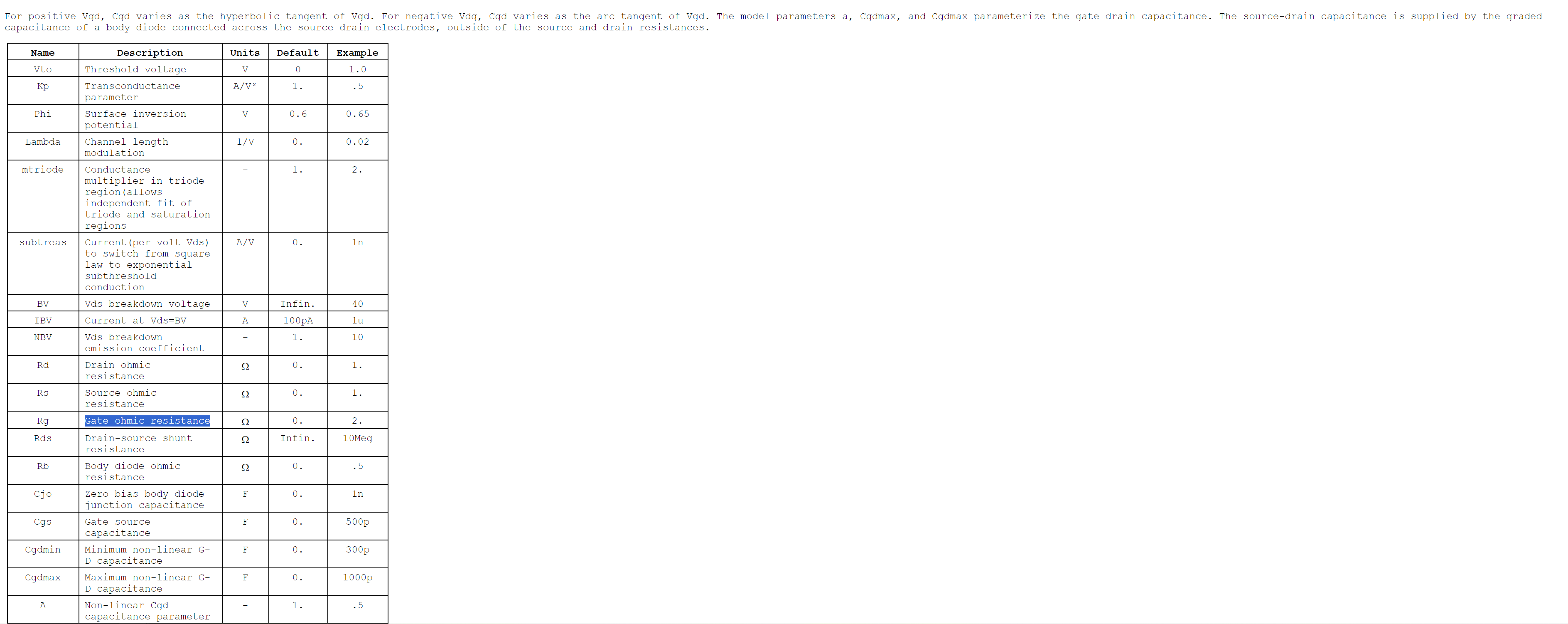When running at a fast signal, why does the MOSFET below not turn off, even when gate voltage is well below threshold (even negative)? Although the signal is fast (7 MHz, 140 ns period) it is < 1/10th the turn on / turn off time.
For that matter, it doesn't seem to fully turn on either.
The datasheet shows gate threshold voltage to be between 0.8V and 3V. The troughs are well below 0.8V, and the peaks above 3V. Furthermore, increasing amplitude to 4V (so that gate voltage goes from -4V to 4V) didn't substantially change things: we still see R1 current between 0.93mA and 1.26mA, and drain voltage never above 2.4V.
The cause can't be attributed to input capacitance, as the input is an ideal voltage source.
Decreasing the frequency to 1 MHz solves the problem:

But why? The datasheet shows turn off and turn on times of 10 ns, well within the 140 ns period of Vsig. Why does the MOSFET fail for fast signals, even if their period is > 10x turn off and turn on time?




